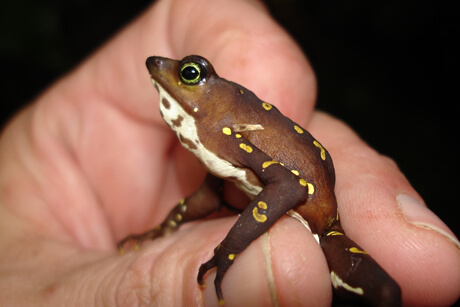Previous studies have suggested that a group of closely related strains of the fungus Batrachochytrium dendrobatidis (Bd) is responsible for the global epidemic that resulted in the death of amphibians from dehydration.

see also: The black-bellied round-tongue, the rare frog rediscovered in Hula Lake is a "living fossil"
The fungus that caused the extinction of amphibians all over the world is older than previously thought, but it may have spread through the global trade in animals to new areas where the local amphibians did not have a strong enough immune system. This is according to a new study by Cornell University.
Previous studies hypothesized that a group of closely related strains of the fungus Batrachochytrium dendrobatidis (Bd), a relative of the GPL (Global Panzootic Lineage) responsible for the global epidemic that resulted in the death of amphibians from dehydration.
But now, an international team of researchers, with the participation of Kelly Zamudio, an ecologist from Cornell University and one of the main researchers in the study, has sequenced the genomes of 29 strains of the Bd fungus from all over the world.
The result was published in the May 6, 2013 issue of the journal PNAS. The findings reveal that the GPL existed long before the current epidemic. They may be descendants of a common ancestor who lived 26 thousand years ago.
The fungus destroys the amphibians, creates a colony of the affected frogs and develops spores that are dispersed in the environment and harm other frogs.
"We found more genetic variation than was previously known." says Zamudio, professor of ecology and evolutionary biology in the Bd genome sequencing project. "This can lead to a better understanding of the cause of the killing of the frogs. Once we know the genetic makeup of the pathogen, we may be able to understand what makes it such a powerful killer."
The fungus affects about 350 different species of amphibians by eroding their skin, which often causes death. Amphibians began to die in alarming numbers, drawing the attention of scientists to this since the 1998s, particularly in Australia and South America, until in 1998 researchers identified the Bd strain as the source of the disease
The study found samples from Brazil that showed the initial distribution known from the common ancestor. "Earlier in the history of Bd, "the strain isolated in Brazil developed early in the history of Bd in a separate evolutionary path." Zamudio says. With genome sequencing, researchers may understand which genes are less active and which are more active in causing the disease.
Although more work is needed, the researchers found variation in the genome of several peptidases - enzymes that break down proteins, such as those found on the skin. The fungi can also replicate different parts of the genome, but not others. This replication is greater in the most infectious strains found in Panama and Costa Rica where the depletion of the amphibian population led to their extinction.
Thanks to the new genetic information, the scientists will be able to focus on the question - which of the recent environmental changes played a role in making the pathogen more virulent to its host (surrogate) in areas where there is an epidemic and in areas already affected by the GPL?
"The study provides an example of how modern tools that are commonly used to study human diseases can also be applied in the study of biodiversity and conservation." she adds.
Erika Rosenblum from the University of California at Berkeley, Timothy James from the University of Michigan and Jason Starch from the University of California at Riverside also participated in the study. The research was funded by the National Science Foundation and the Cornell Center for Comparative Genetics.
